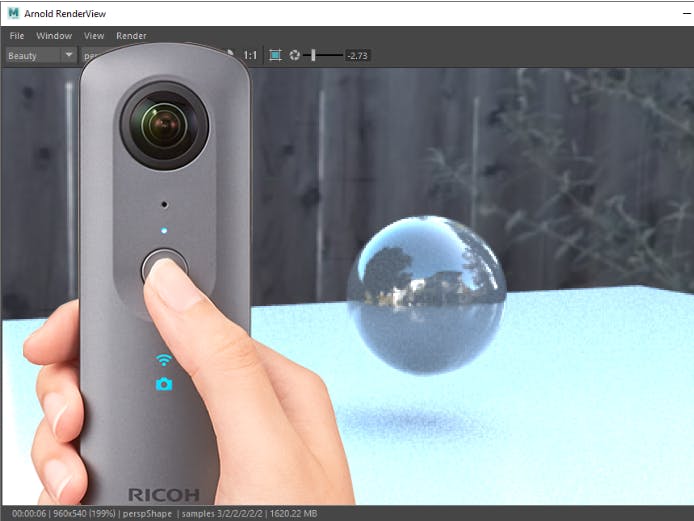Movies, commercial, and video games use 3D "visual effects" models to create amazing scenes such as a car driving through a building or a super hero flying through the sky. To make the models look more realistic, special types of light models are used.
Imagine that you have the sun hitting green trues and blue oceans. Now, imagine yellow Ferrari speeding into the scene so that you can see the reflection in the car window. This reflection and the associated light of the scene makes the model look real.
To build the light model, VFX professionals use special image-based lighting built up from different images at different exposures. The light information is stored inside of HDR files. This article has an explanation of HDR lighting.
One of the problems with using HDR light models is the time needed to build an HDR file.
To solve this problem, Kasper Oerlemanscreated an open source plug-in HDR2EXR that runs inside the RICOH THETA. It is focused at VFX professionals who need to jump on-set, grab highly accurate lighting data without getting in the way of the production flow. The highly accurate lighting information will then be applied to CG characters later.
After automatically combining 33 images, the HDR file will be 160MB in size and contain 32-bit light information.
You can use open source Blender to build or import models and show reflection on surfaces such as glass.
You can also test the application with free software such as Luminance HDR.
You can even tinker with the open source code in Android Studio.
The plug-in relies on the Android NDK toolset to run OpenCV natively inside of the camera.
As the plug-in is open source, please submit your improvements back to the project.
Kasper Oerlemans











Comments
Please log in or sign up to comment.